-
EngineTurbo 3.8L V8 + E-Motor
-
Power903 HP / 664 LB-FT
-
Transmission7-Speed DCT
-
0-60 Time2.6 Seconds (est.)
-
Top Speed217 MPH
-
DrivetrainRear-Wheel Drive
-
Curb Weight3,075 LBS (est.)
-
Seating2
-
Cargo4.2 CU-FT
-
MPG28 Combined (est.)
-
Base Price$1,150,000
As a pure driver's exoticar, the P1 outshines the Porsche in dynamics and nimbleness, while the 918 engineers the miracle of potentially exceptional mileage combined with face-flattening speed that equals the Big Mac. Both cost around $1 million ($845,000 for the 918, $1.15 million for the P1 – at this level, what's a few hundred-thousand dollars among friends?), and both get most normal humans as close to experiencing Formula One for the street without driving something that looks like a single-seat, open-wheel car.
You can imagine my excitement as I was ushered over to Dunsfold Airfield south of London to have my cherished laps in McLaren P1 validation prototype No. 5. I have never experienced good weather here, but I was thankfully blessed with tepid air and brilliant late winter sunshine for this drive. This means that there wasn't the usual standing rainwater on the scrappy Top Gear test track. As I arrived at the McLaren bunker alongside the makeshift circuit, the mellow, flame-yellow P1 I was to drive was already going through motions in a client's hands.
This client and his charming wife were just finishing up several laps of their own, including some absolutely scorching rounds with McLaren chief test pilot Chris Goodwin, as well as with McLaren GT3 driver Duncan Tappy. The couple was as giddy as teenagers when I talked with them, smiling from ear to ear. And they were not from Dubai, not from Moscow, not from Singapore, and not from Beverly Hills. They were from Ohio, so leave your rich people stereotypes at the door.

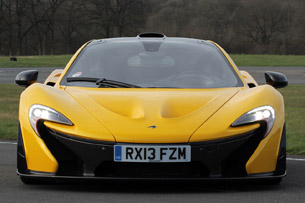
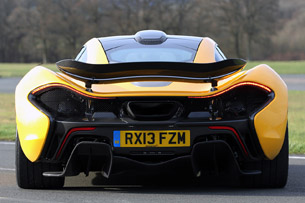
I should get on with the drive experience, but a primer about what this McLaren proposes to the driver is needed. Like the MP4-12C, the P1's "petrol-electric" plug-in hybrid sits on the same aluminum-carbon composite architecture and uses the company's M838T 3.8-liter twin-turbo V8 built by Ricardo. From there, it's all changes and intelligently pumped-up performance numbers.
A dry P1 sitting empty weighs a stated 3,075 pounds, which is not far off the weight of a 570-horsepower Ferrari 458 Italia. Its e-motor, lithium-ion battery pack and other EV ancillaries account for roughly 450 of those pounds. The rear-amidships, compact, twin-turbo V8 itself is calibrated to 727 brake-horsepower (616-bhp in the 12C) and 531 pound-feet of torque (443 lb-ft for 12C), both numbers already impressive enough to make mouths water. But then a 4.4-kWh lithium-ion battery array urges the electric motor to put out a further 176 bhp and 192 lb-ft of torque. In E-mode, the electric motor can run things alone over a maximum of approximately 7.5 miles.In E-mode, the electric motor can run things alone over a maximum of approximately 7.5 miles.
A little less max e-torque happens when running in parallel with the combustion engine, hence combined numbers of 903 bhp and "just" 664 lb-ft when you're flooring it in all modes but electric-only. This powertrain has a racing-style Kinetic Energy Recovery accessed under full throttle via a red IPAS steering wheel button. IPAS stands for Instant Power Assist System and it does what it says on longer straights, using all available electric power.
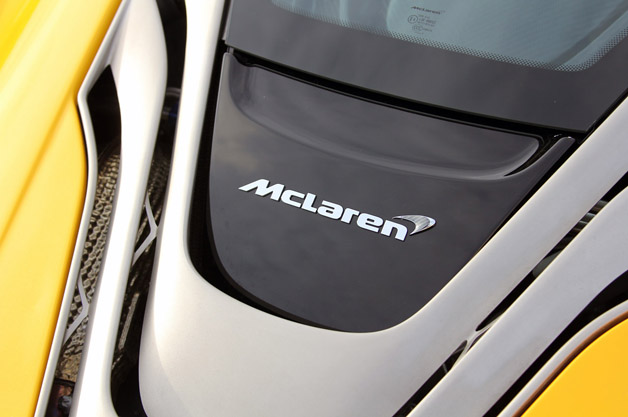
Marshaling all that combustion and battery-provided power, you can get from a stop to 60 miles per hour in 2.6 seconds using the P1's wholly dramatic Race mode. Another perspective-warping number: 128 mph is reached in 6.8 seconds. And 186 mph hits your windscreen in just 16.5 seconds – that's five seconds ahead of the legendary McLaren F1 and 6.5 seconds quicker than the 918 Spyder. Yes, she's quick.
There are significant differences in the P1's adaptive suspension scheme, in that the circuit that governs fore-aft heave and side-to-side roll is separate from the circuit governing pure damper bump and rebound. These are all monitored via a single circuit on the 12C. This fact gives the P1 an amazing amount of hydraulic adjustability along with quicker reaction times. The suspension alterations are drastic enough to warrant a name change from ProActive Chassis Control on the 12C to RaceActive Chassis Control, or RCC, on the P1.186 mph hits your windscreen in just 16.5 seconds – that's five seconds ahead of the legendary McLaren F1.
Hoisting the carbon composite swan door skyward, getting in starts with throwing your right foot over a wide sill, as you might do in the game of Twister. Then bend at the hips and – plunk – you're in. All the way in – the Recaro performance seating is mighty fine. Looking around, the nice arrangement of controls on the 12C is essentially in place here on the P1, and like on the 12C, it all takes some getting used to through trial-by-fire practice. My co-pilot was the patient and supportive racer Duncan Tappy.
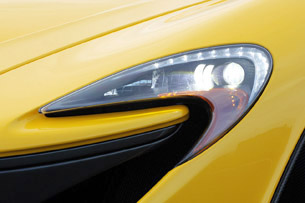
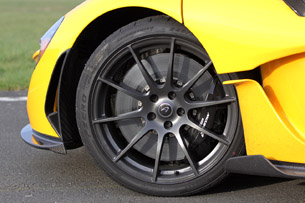
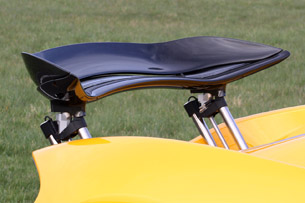
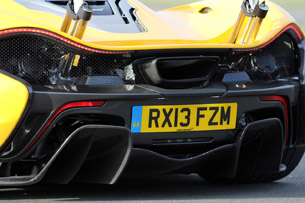
Maybe it's because they were in a client-drive mode afterglow, but both Goodwin and Tappy asked me if I'd prefer leaving the sequential Seamless Shift Gearbox in full Auto mode while just switching between drive moods via the two center-dash dials. I naturally looked sideways at that suggestion, since I love me some paddle shifting with this gearbox, which is basically carried over from the 12C. The point is that even in Auto mode, the SSG shifts up and down brilliantly and can free one up to more deeply explore the hardcore dynamics. But given what little time I had with the P1, I had no intention of not paddling my ratios.
Settling in to the high-sided and supportive performance seating bolted to the carbon-fiber passenger tub, the cockpit just made so much sense. A very likeable point on the 12C also holds true here on the P1: brilliant visibility in all directions, particularly for a mid-engined car. The Start button mounted up high in the middle guns the 3.8 biturbo to life, and the single broad, flat collector out back thunders a serious idle. I am to start in Normal mode and then cycle progressively through the ever more aggressive setups, and I've also requested a couple of laps to explore E-mode.Brilliant visibility in all directions, particularly for a mid-engined car.
In Normal, you can certainly push the P1, but my wish on Lap One was to see how 'normal' this surreal beast could possibly be, envisioning a normal day tooling around suburbs with a small bag or two in the front 4.2 cubic-foot cargo sliver. It also gave me a shot at remembering everything about Dunsfold's layout before things got more heated.
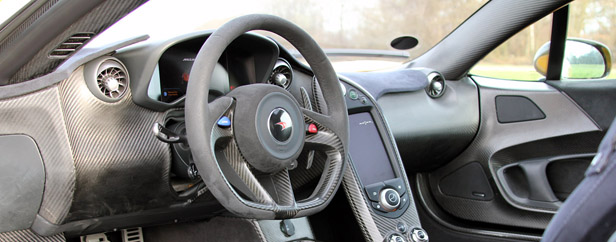
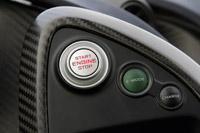
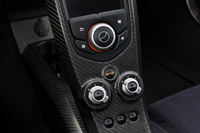
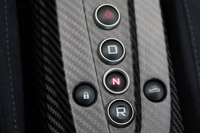
If my brief time with it is any indication, the P1 is legitimately a perfectly fine everyday driver, if you are that sort of eccentric. With everything set Normal, it's as comfortable as the 12C can get, which is extremely so for a supercar. I notice right off, nonetheless, its sharper steering versus the 12C (a super-quick 2.2 turns lock-to-lock compared to the 12C's 2.6 turns). And the action is light, easy, and not at all vague. The overall feel of the passenger cell and damper tune while the Pirelli P Zero Corsa tires (19-inch front and 20-inch rear) roll over the imperfect tarmac at reasonable speeds is nevertheless more hardcore than the 12C. The foreshadowing of what's to come is not lost on me. Duncan Tappy, meanwhile, is courteous and helpful and tangibly bored silly with my exploration.Its balance is insanely correct, and the whole enterprise is engineered for maximum speed through all track sections.
Graduating to Sport and then to Track modes, I find myself shoving the P1 around with far more intent, eager to explore the ride at full tilt as well as the substantial G-forces. McLaren says the P1's lateral acceleration shows regular peaks of 2.4 Gs while it can easily maintain a constant 1.8 Gs on the skidpad test, figures that are flat-out astounding. I'm getting more familiar again with Dunsfold's imperfections, carrying much more speed as the engine and e-motor boost me together. At this point, the P1 feels infinitely capable, as though I could do almost 100-percent better than I already am. Its balance is insanely correct, and the whole enterprise is engineered for maximum speed through all track sections. In the P1, occupants sit noticeably closer together, an intentional strategy that helps centralize mass for optimal chassis movements. Any tail wag provoked is all good thrills and no panic, and the steering weighs up and is eerily precise, allowing for exactly what my mind's eye envisions through every correct line and weight shift. And this is all accompanied by an engine that makes a most satisfying racket inside the cabin.
Then a move into the P1's ultimate Race mode. But, as Duncan warns me, Race mode gets its own button for a reason. It is known as a "hydraulic event." This switch-up to Race is as close as a car comes today to being a Steven Spielberg Transformer.
Switch the car off and turn the ignition back on. Keep your finger on the Race button. The instrument cluster shows you graphically exactly what is happening to all of the car's aspects. It takes thirty seconds to lower the P1 from its standard 4.7-inch ground clearance down to the 2.8-inch clearance for Race. The enormous rear air brake grows tall on its hydraulic struts and tilts nearly vertical. At just 160 mph, the downforce generated in this setup is an additional 1,320 pounds, a figure McLaren claims is the most ever generated by any road car.I have never, ever been able to go this quickly, safely and precisely.
We take off for a couple laps thus configured and, well, you've never felt anything quite so crazed in an exotic. It's crazed only in the sense of unleashing you and the car to push and pull harder than you've ever done before. Between the sheer practical masses of downforce front and rear, the Race aspect of the suspension, the giant whoosh of petrol-electric boost force, the shifting of the DCT gearing, and the F1-grade silicon carbide-glazed carbon ceramic brake discs by Akebono, I have never, ever been able to go this quickly, safely and precisely. The joy is visible on my face as Duncan finally perks up and encourages me.
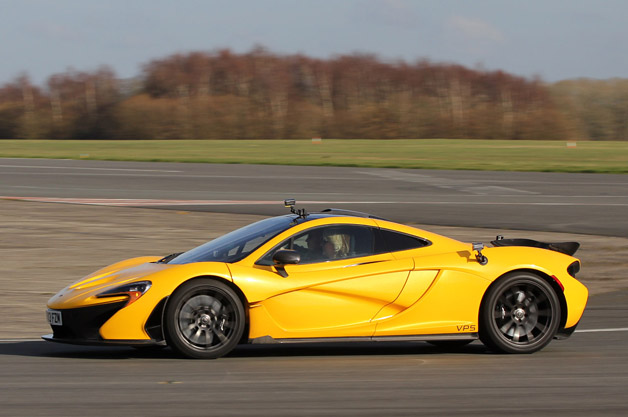
"Press the red IPAS button... now!" Duncan says loudly as we hit the main straight out of a curve and I'm on full screaming throttle. I do so with my right thumb as ordered, and I am suddenly Jenson bloody Button, getting pressed hard into my seat. I've never felt anything quite like this before in a street car, but I've always wanted to. The 176 max horsepower of the e-motor alone provides over twice the KERS-like oomph of what's allowed in F1 cars. It's addictive, and I do it again on the same straight while also tapping the DRS blue button with my left thumb to lower downforces. I am flying on land in this British bullet. Finally, Duncan gets unprofessional like me and laughs.This is a new world of exotic hardcore speed and balance; complete with physics you didn't think were possible.
This has been all too short a rush, but I get it. I really get the vision of the P1 and, boy, do I like it. This is a new world of exotic hardcore speed and balance; complete with physics you didn't think were possible. The Ferrari LaFerrari has its work cut out for it, believe you me, and Porsche, I am certain of it, is already at the drawing board creating a 918 that can do all this like this while still being the industry's greenest hypercar. What an amazingly exciting time to be able to drive such cars, study them and talk with their engineers.
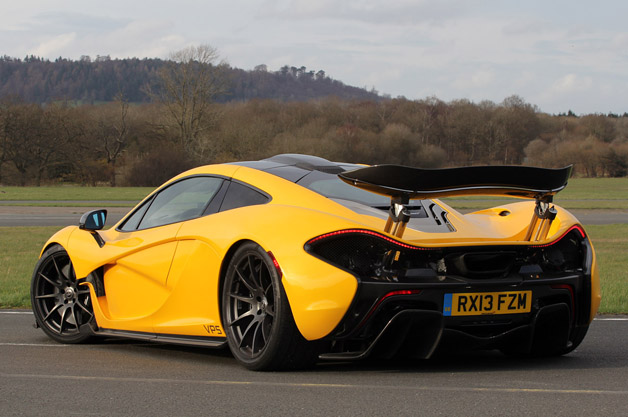
To come down to Earth a bit, I switch over from Race to its polar opposite E-mode for a final lap. While it is admirable to have this mode for city center driving, McLaren is concerned a little less about greening the planet with the P1 than Porsche has been with its 918. All the same, an estimated 28 miles per gallon is not too shabby at all. The electrics are here more for boost assistance and, in order to make certain you have all of it available as often as you like, the Charge button sets everything up for optimal renewing of the lithium-ion cells. It only takes ten minutes on average to reload for another full shot at boost greatness.All 375 McLaren P1s have been sold.
All 375 McLaren P1s have been sold. Deliveries started in October 2013 and are due to finish by the middle of 2015. The United States alone accounts for some 120 units, Asia Pacific for another 120, and the rest will be scattered through Europe, the Middle East, and other regions.
Ohio will never be the same.










Sign in to post
Please sign in to leave a comment.
Continue